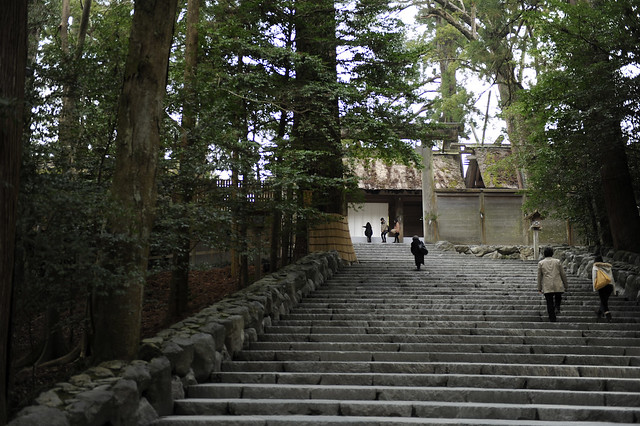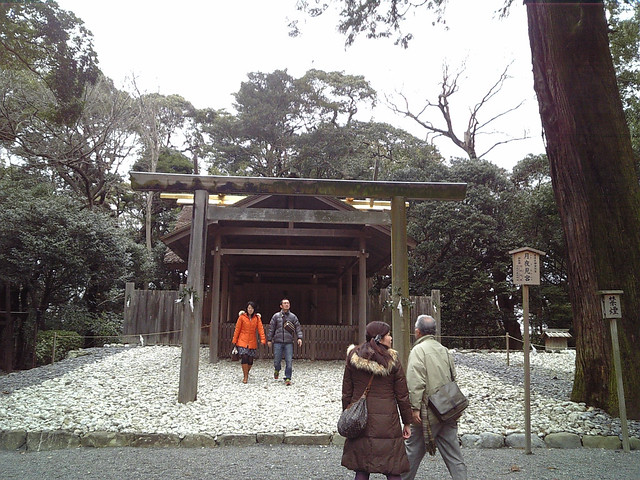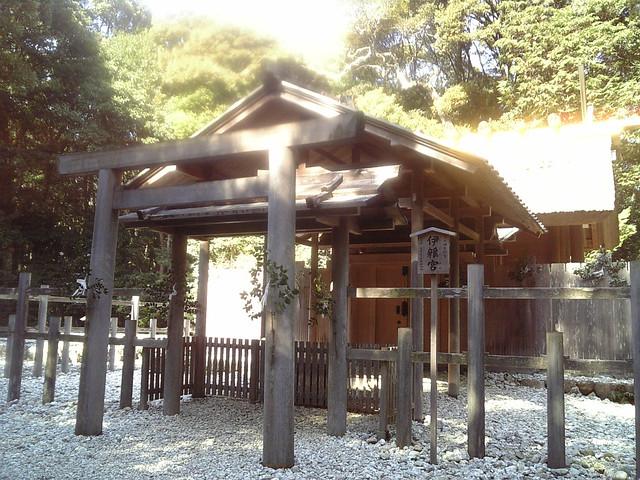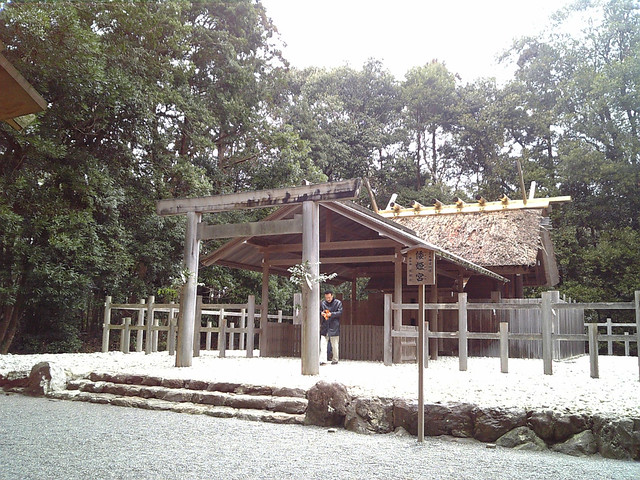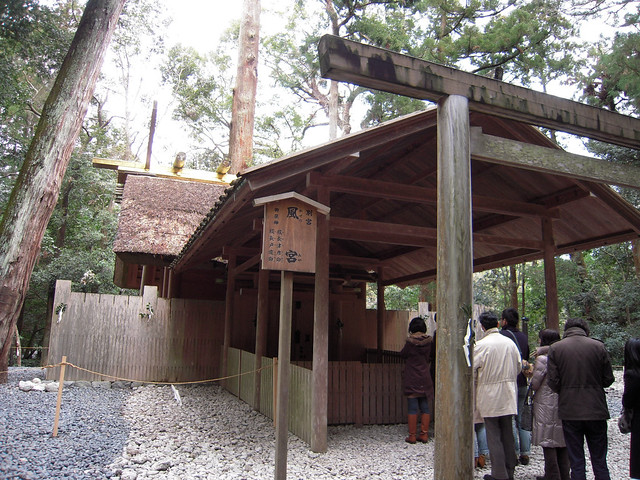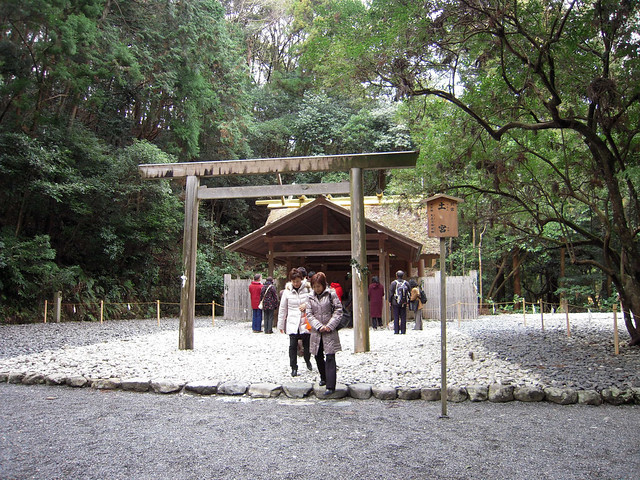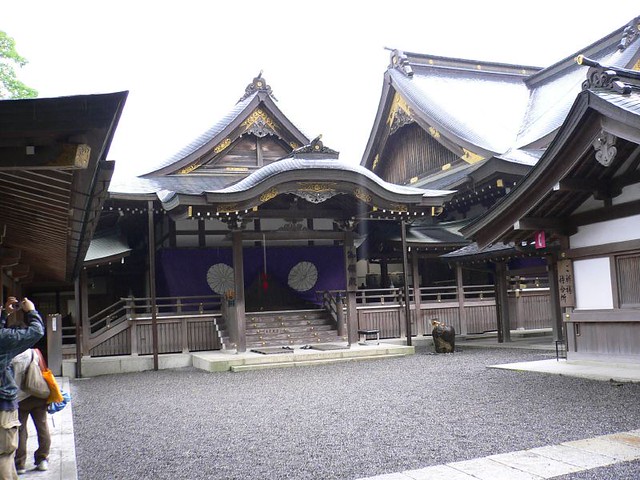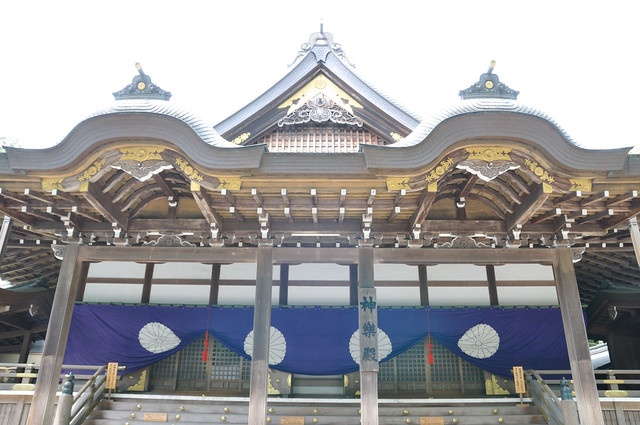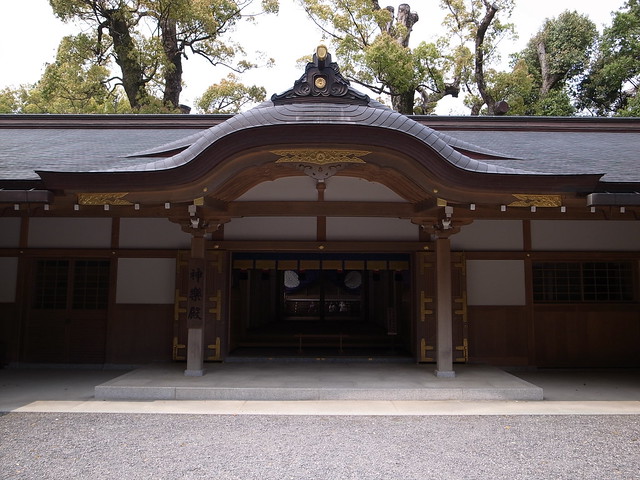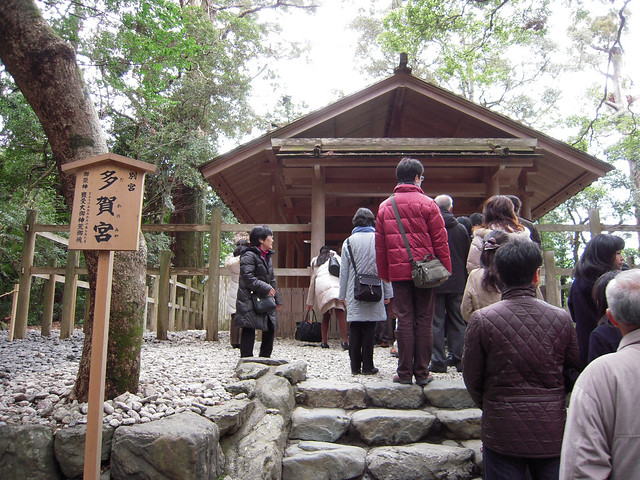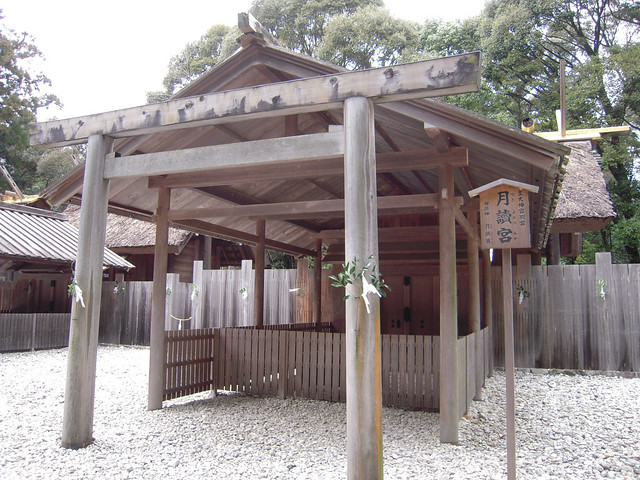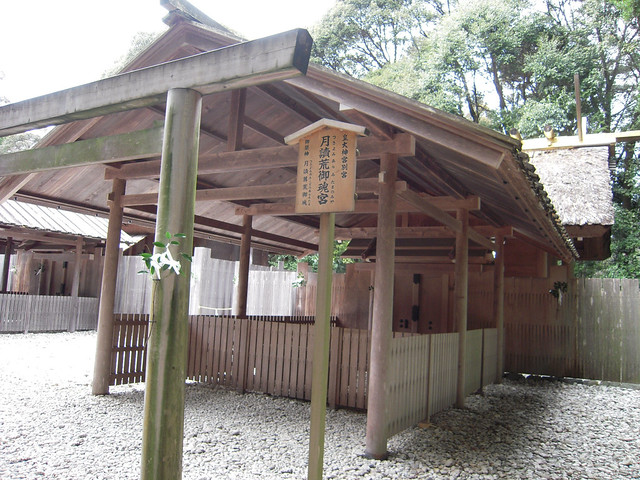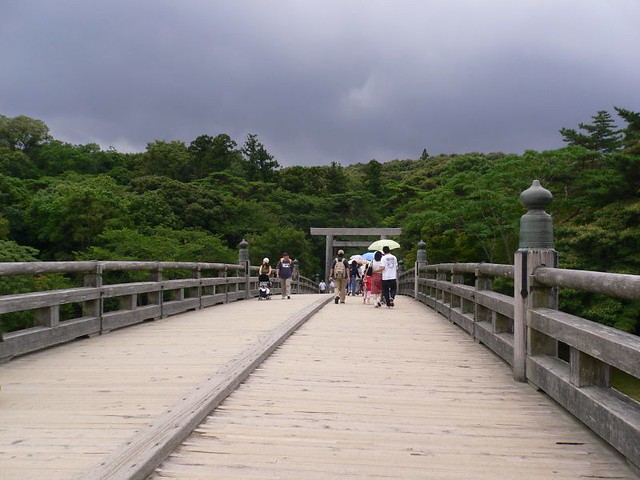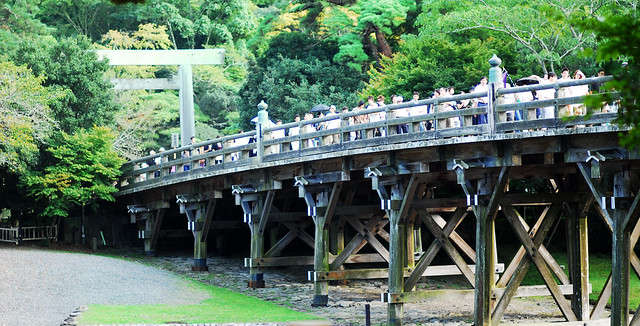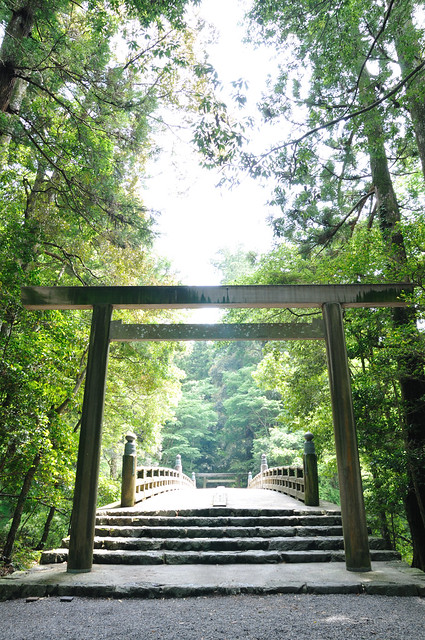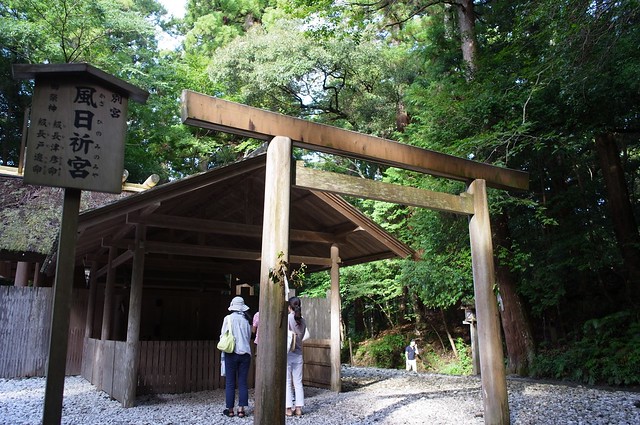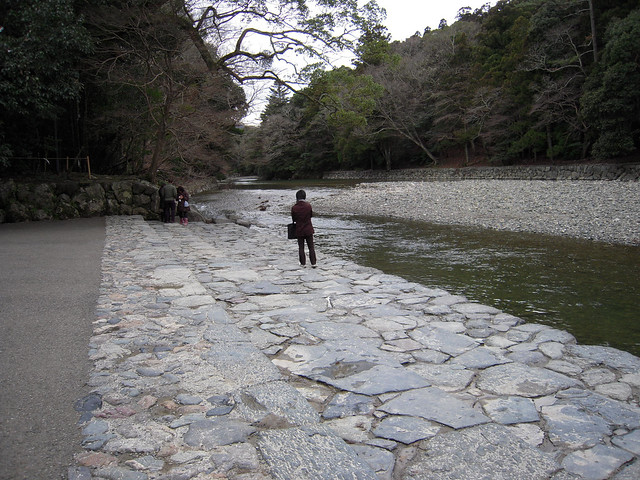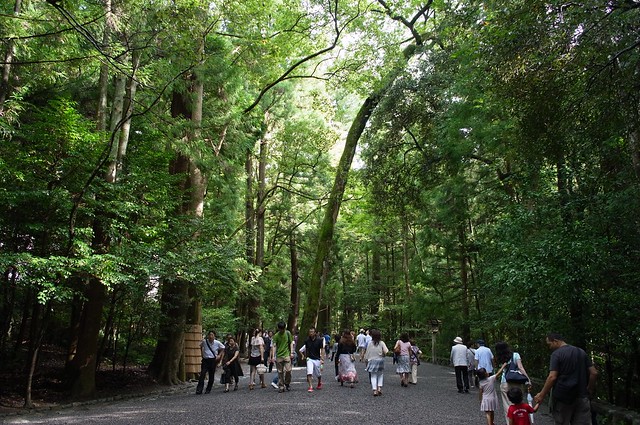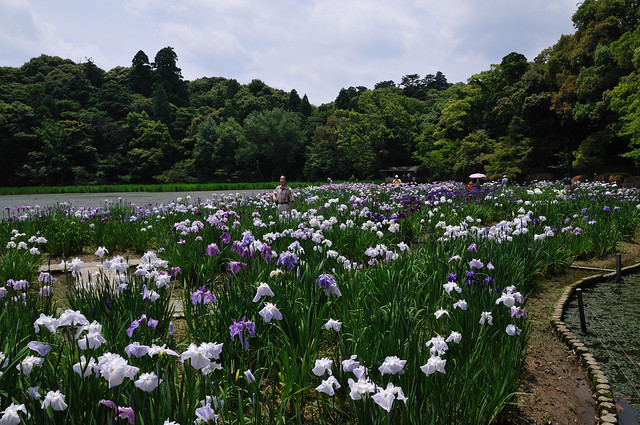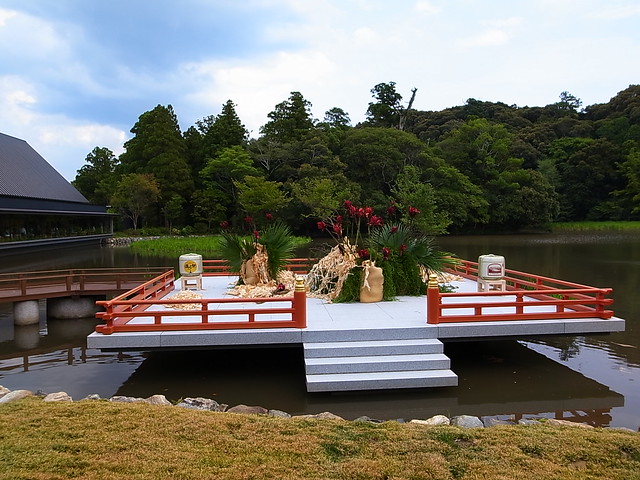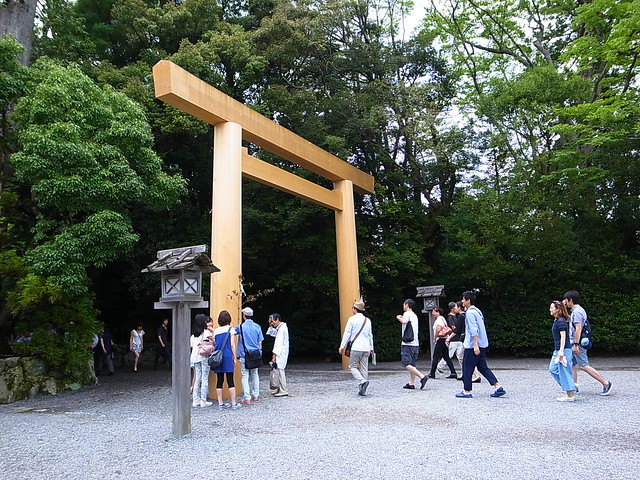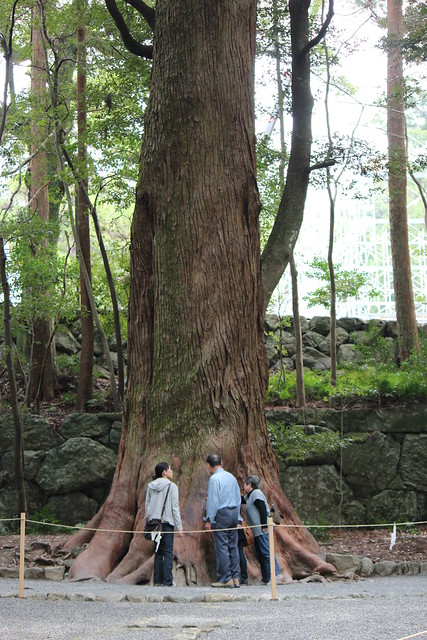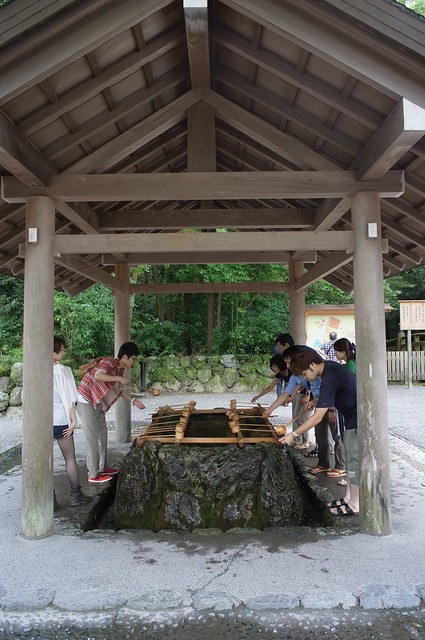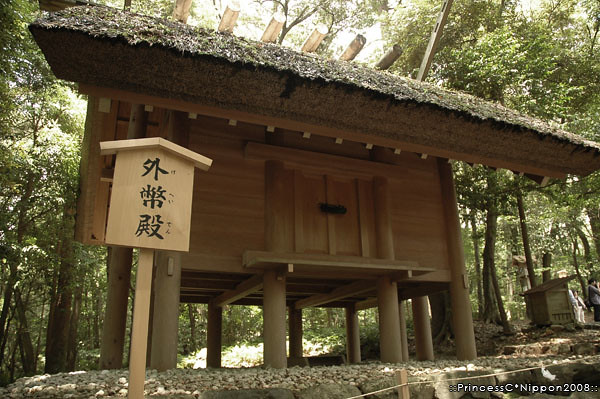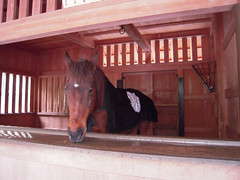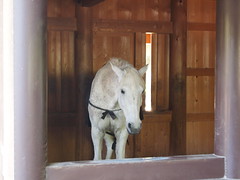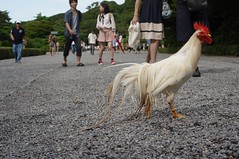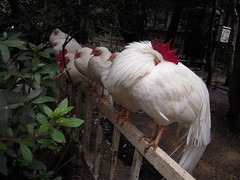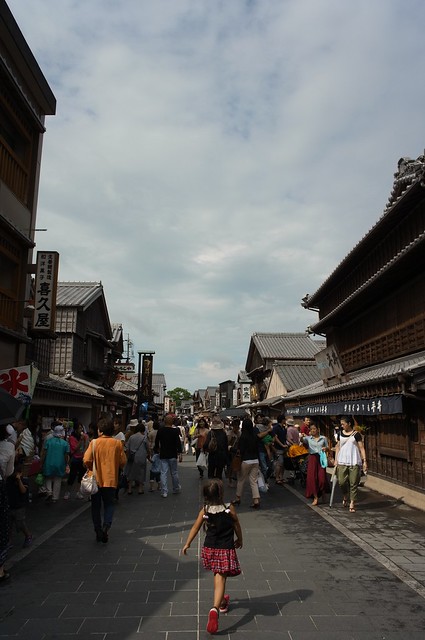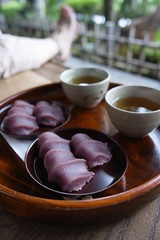In Ise Jingu Shrine(伊勢神宮) in Mie Prefecture, the Sengyo(transfer of the deity) ceremony was held at the Naiku(the inner shrine) on October 2, and at the Geku(the outer shrine) on October 5. Izumo Taisha Grand Shrine(出雲大社) in Shimane Prefecture and Ise Jingu Shrine carried out Sengu(遷宮, transferring deities to new or restored shrine buildings) this year.
Ise Shrine transfers its deities to new shrine buildings once a every 20 years, and Izumo Shrine does its deity(大国主大神, Okuninushi-no-okami) to its restored building once a every 60 years. At Izumo Taisha Grand Shrine, the deity was returned to the restored shrine at a festival called Senzasai(遷座祭) was held on May 10.
Shikinen Sengu(式年遷宮) means transferring of a deity to a new shrine building once in a prescribed number of years. When a religion scholar participated in the ritual, he felt that an old deity died and a new deity was born. Deities die and are reborn any number of times. In the people's consciousness it is imprinted that deities have eternal youth and immortality by rebuilding every 20 years. According to Ise Shrine, the first shikinen sengu was held at the Naiku in 690. This event was discontinued for over 120 years during the Warring States Period and was postponed several times.
Shikinen Sengu at Ise Shrine:
http://www.isejingu.or.jp/shosai/english/index.htm
http://www.sengu.info/index.html (Japanese version only)
The 61st rebuilding of the Ise Shrine:
http://www.isejingu.or.jp/shosai/english/sikinen/sikinen2.htm (English version)
The 62th rebuilding of the Ise Shrine:
http://www.isejingu.or.jp/shikinensengu/62kai-index.html (Japanese version only)
Sengyo ceremony video(available on the net until November 3, 2013):
http://media.sengu.info/
It's unclear what is the significance of the 20 year time span. There are various theories as to the time span.
In the lunar calendar, 'Sakutantoji' (the winter solstice on the 1st of the eleventh month) comes around once in 19 or 20 years (Metonic cycle). In ancient China, the winter solstice and the 1st of the 11 month marked the beginning of a year. So Sakutan Toji was celebrated in style.
Shikinen Sengu is thought to be in fact large scale Kannamesai. The storage period of grain for Kannamesai was 20 years.
Ise Jingu Shrine has 125 shrines centered on Naiku(内宮, the inner shrine) dedicated to Amaterasu-omikami(天照大神) and Geku(外宮, the outer shrine) dedicated to Toyouke-no-omikami(豊受大神).
In the 1830s, 4.8 million people, which accounted for a sixth part of the total population in Japan, made pilgrimages to Ise Jingu.
For more information about pilgrims to Ise Shrine in the Edo Period
http://ichinen-fourseasonsinjapan.blogspot.jp/2010/06/ise-ondo-koi-no-netaba.html
Ordinary people can't step into the sacred areas including the main sanctuary buildings of the Naiku and Geku. They can enter the areas by contributing money to the shrine at the Kaguraden(神楽殿), but the innermost areas are closed to them. They have to obey a strict dress code in order to enter the areas.
Shinto shrines have an austere style.
entrance to the Naiku's sacred area including its main building
entrance to the Geku's sacred area including its main building
Naiku, Geku and 14 Betsugu(shrines belonging to Geku and Naiku) were rebuilt.
Ten Betsugu shrines belonging to Naiku include Aramatsuri-no-miya(荒祭宮), Tsukiyomi-no-miya(月讀宮), Tsukiyomi-no-aramitama-no-miya(月読荒御魂宮), Izanagi-no-miya(伊佐奈岐宮), Izanami-no-miya(伊佐奈弥宮), Takihara-no-miya(瀧原宮), Takiharanarabi-no-miya(瀧原竝宮), Izawa-no-miya(伊雑宮), Yamatohime-no-miya(倭姫宮), Kazahinomi-no-miya(風日祈宮).
Four Betsugu shrines belonging to Geku include Taka-no-miya(多賀宮), Tsuchi-no-miya(土宮), Kaze-no-miya(風宮), Tsukiyomi-no-miya(月夜見宮).
The new building of each shrine was built on an adjacent site next to the old one. Each rebuilding alternates between the two sites. Old and new shrine buildings like twins will stand side by side until around next February. However, the old building of Naiku might be demolished earlier.
Sengyo ceremonies will be held at Taka-no-miya on October 13, at 12 Betsugu shrines in 2014.
Tsukiyomi-no-miya(月夜見宮)
Tsukiyomi, Amaterasu's younger brother, is enshrined in Tsukiyomi-no-miya(月夜見宮) in Geku and Tsukiyomi-no-miya(月讀宮) in Naiku.
Izawa-no-miya(伊雑宮)
Takiharanarabi-no-miya(瀧原竝宮)
Yamatohime-no-miya(倭姫宮)
Kaze-no-miya(風宮)
Tsuchi-no-miya(土宮)
Kaguraden(神楽殿) in Naiku
Kaguraden(神楽殿) in Naiku
Kaguraden(神楽殿) in Geku
At Goshoden (main sanctuary) of the Naiku, Visitors should give thanks to the deity. Making a personal wish to the deity is not recommended there. Visitors are allowed to make a personal wish at Takanomiya(either 多賀宮 or 高宮) in Geku or Aramatsurinomiya(荒祭宮) in Naiku.
Taka-no-miya(多賀宮)
Aramatsuri-no-miya(荒祭宮)
Takanomiya is a shrine where aramitama (deity's rough soul) of Toyouke-no-omikami is enshrined. In Aramatsurinomiya, Amaterasu-omikami's aramitama is enshrined. As with Naiku and Geku, old and new buildings of these shrines stand side by side. Originally the approach to a Shinto shrine was for deities. They walk on the middle of the approach, so human is allowed to walk on its sides.
http://www.flickr.com/photos/compose-r/7990310261/
The demolished old shrines are recycled as material for the construction of other shrines in Ise Shrine and local shrines related to the shrine. after Shikinen Sengu was held in 1993, the old building of Tsukiyomi-no-miya(月讀宮) was moved to Okushiri Island (奥尻島) in Hokkaido. It has been used as the main building of Aonae-kotoshironushi Shrine(青苗言代主). Its former building was destroyed by tsunami and fire due to the southwest-off Hokkaido earthquake on July 12 in 1993. Amaterasu's parents, her younger brother Tsukiyomi and his aramitama (deity's rough soul) are enshrined in Tsukiyonomiya.
Tsukiyomi-no-miya(月讀宮)
Tsukiyomi is a younger brother of Amaterasu.
Izanagi-no-miya(伊佐奈岐宮)
Izanagi is the father of Amaterasu and Tsukiyomi.
Izanami-no-miya(伊佐奈弥宮)
Izanami is the mother of Amaterasu and Tsukiyomi.
Tsukiyomi-no-miya's aramitama (deity's rough soul) is enshrined in Tsukiyomi-aramitama-no-miya(月讀荒御魂宮).
The logs that were used as pillars at Shikinen Sengu in 1929 were diverted to the torii(shrine gate) of Uji Bridge(宇治橋) in Ise Shrine at Shikinen Sengu in 1953, to the torii of Suzukanoseki(鈴鹿の関) in Kameyama City, Mie Prefecture in 1973.
Although the torii gate of Ikuta Shrine in Kobe was destroyed by the Great Hanshin earthquake on January 17 in 1995, the gate was rebuilt by use of the logs in July of 1995. In Tohoku Region, more than 500 shrines were destroyed or swept away by quake and tsunami on March 11, 2011.
About 10 of them were rebuilt from thinned wood in the Ise Shrine's forest. Where old logs will be transferred has not been decided yet.
Torii gate of Uji Bridge
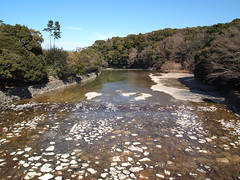 |
伊勢神宮内宮 by Kentaro Ohno
https://www.flickr.com/photos/inucara/4375763429/ |
Isuzu River viewed from Uji Bridge
Uji Bridge over the Isuzu River leads to the Naiku.
Kazahinominomiya-mihashi Bridge(風日祈宮御橋) was also rebuilt. The bridge leads to Kazahinomi-no-miya(風日祈宮).
old Kazahinominomiya-mihashi Bridge
new Kazahinominomiya-mihashi Bridge
Kazahinomi-no-miya(風日祈宮)
Two deities of the wind are enshrined in this shrine. It was believed that they caused Kamikaze (wind of god) and chased away the Mongolian army at the time of the Mongolian Invasion in 1274 and 1281.
Mishine-no-mikura(御稲御倉) storehouse for rice. This building is similar in architectural style to the main buildings of Naiku and Geku. Visitors can take a close look at this building.
 |
| Mishine-no-mikura |
Isuzagawa Mitarashi(五十鈴川御手洗場) in Naiku
Pilgrims cleanse their hands and rinse their mouths here.
Magatama-ike Pond(勾玉池) in Geku
new torii gate of Geku
Worshippers wash their hands and mouths at Temizusha(手水舎
).
Geheiden(外幣殿)
one of two sacred horses belonging to Geku
one of two sacred horses belonging to Naiku
Some roosters are roaming about in the shrine. The rooster is regarded as a messenger of the deity at Ise Shrine. It comes from the following myth.
Amaterasu, the female deity of sun, was troubled over her brother's barbaric behavior and hid inside a rock cave. This caused the sun to hide for a long period of time. Other deities got bothered. They tried many different ways to get her out of the cave They racked their brains about how to get her out of the cave. They made roosters crow as a way of luring her away.
The Sengyo ceremony starts with an imitation of the crow of a rooster.
The 62nd Shikinen Sengu of the Ise Shrine started in 2005. In addition to the rebuilding of shrines, 1,576 items of 714 different kinds including furnishing goods and costumes are also changed for new ones. A sword named Sugari-no-ontachi, one of the items, is decorated with the tail feather of a Japanese crested ibis.
Shikinen Sengu is also a way of passing techniques from one generation to the next. The items are made with basically the same material as the original items in the same way. Contemporary master craftsmen create the precise duplicates of the original objects to the greatest extent possible. The items that were placed in old shrine buildings are displayed at Jingu History Museum(神宮徴古館, Jingu Chokokan).
Jingu History Museum(Jingu Chokokan Museum): http://www.isejingu.or.jp/shosai/english/bunka/bunka.htm http://www.ise-kanko.jp/syuyu/goriyaku.html (Japanese version only)
Okage-yokocho Street in
Oharai-machi on approach to the Naiku of Ise Jingu Shrine
Akafuku(赤福), a Japanese-style confection store
Akafuku-mochi(赤福餅) has been a specialty confection of Ise. Akafuku(赤福), a Japanese-style confection store, is said to have started selling the confection in front of the Naiku in 1707.
Akafuku-mochi(赤福餅)


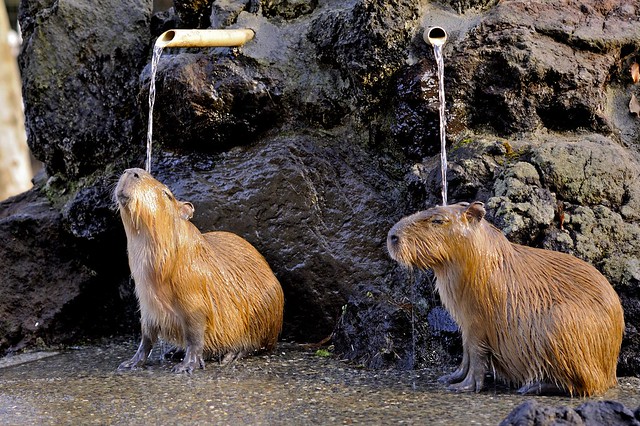
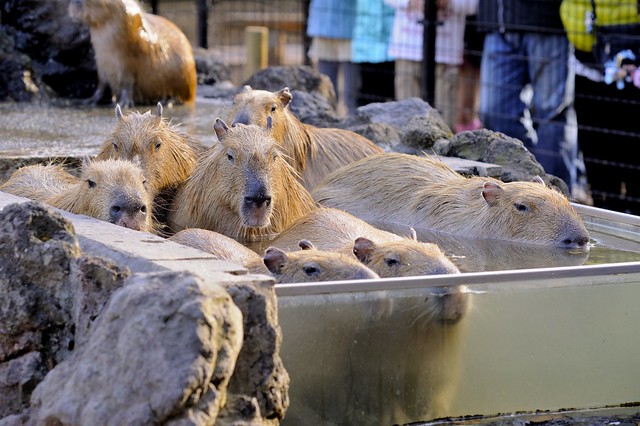
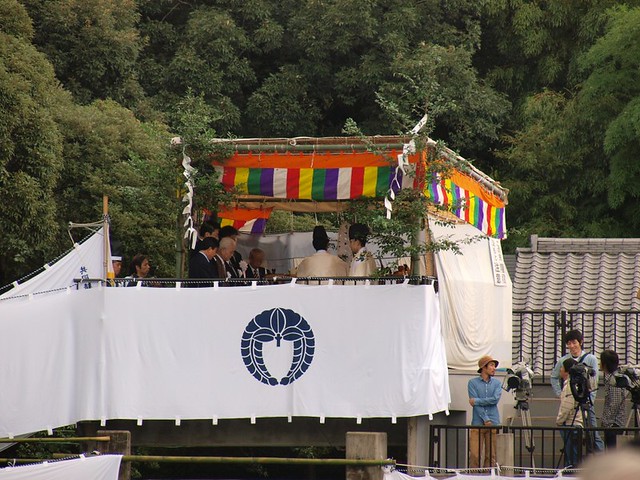
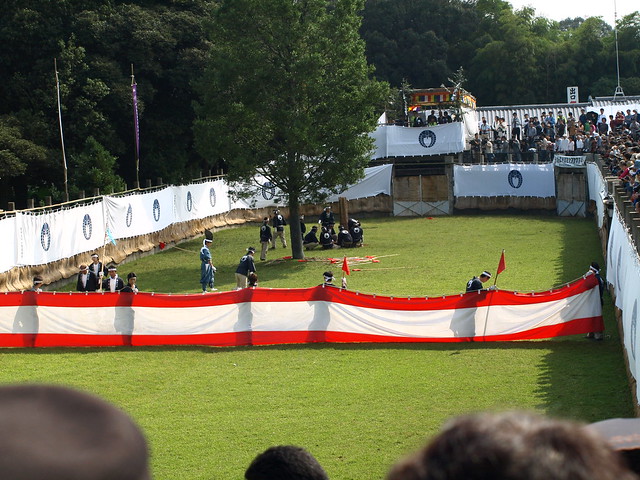
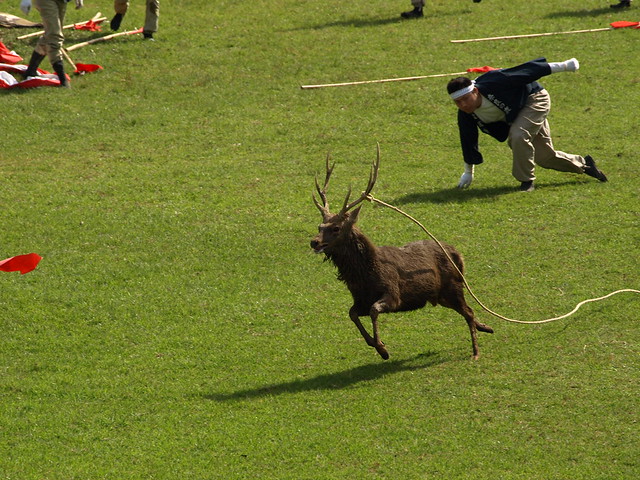
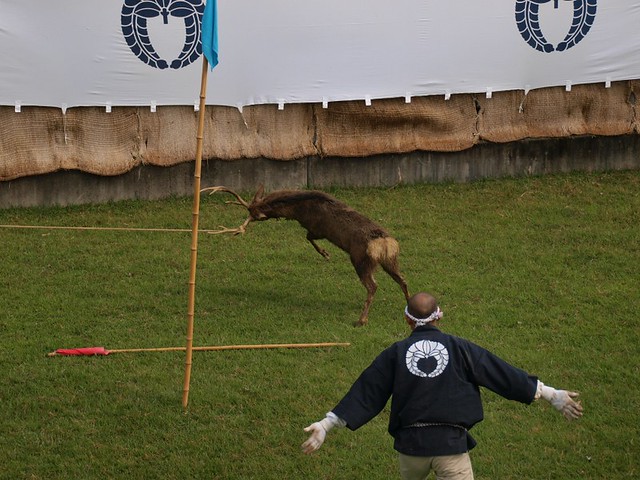
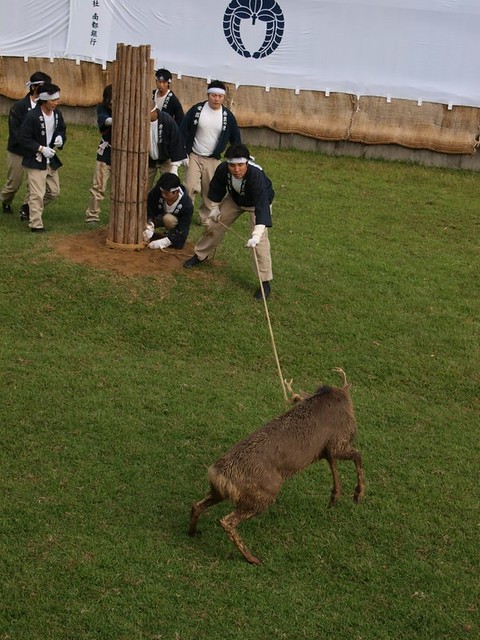
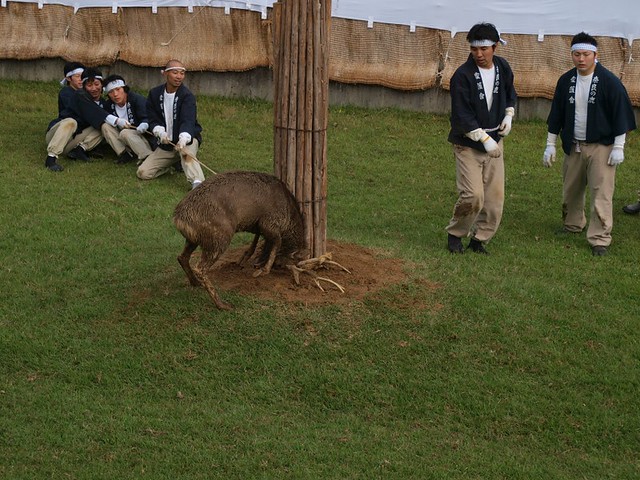

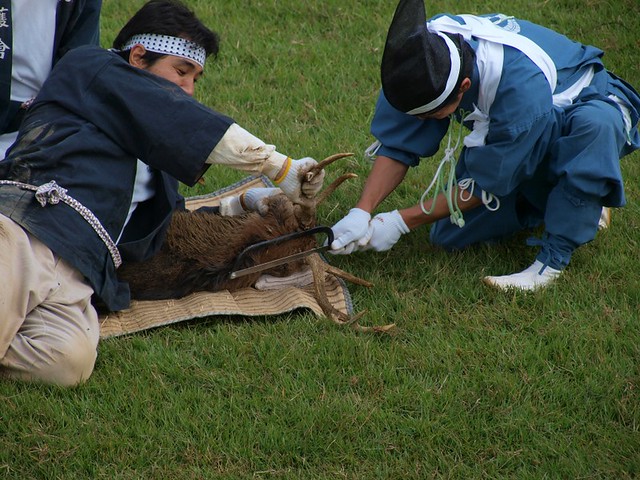
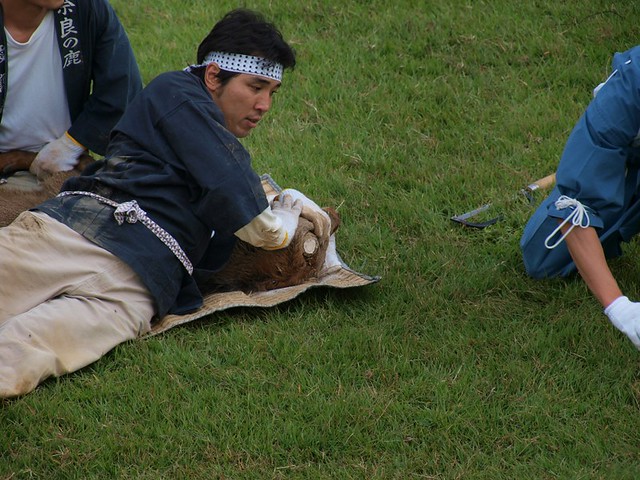
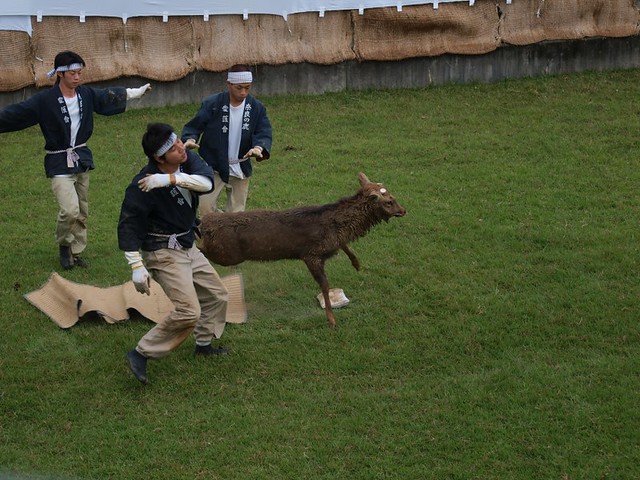
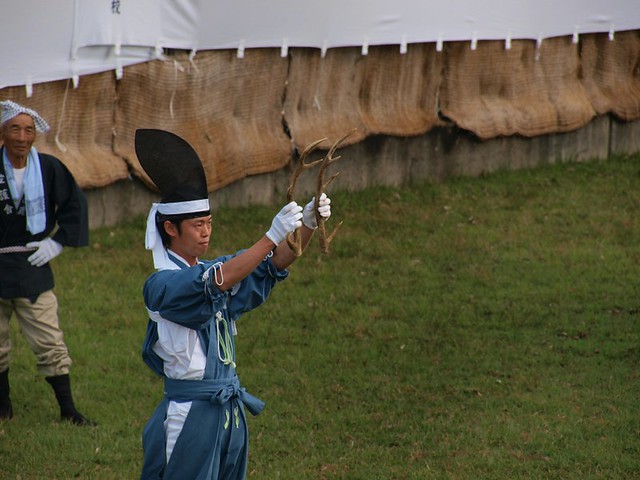





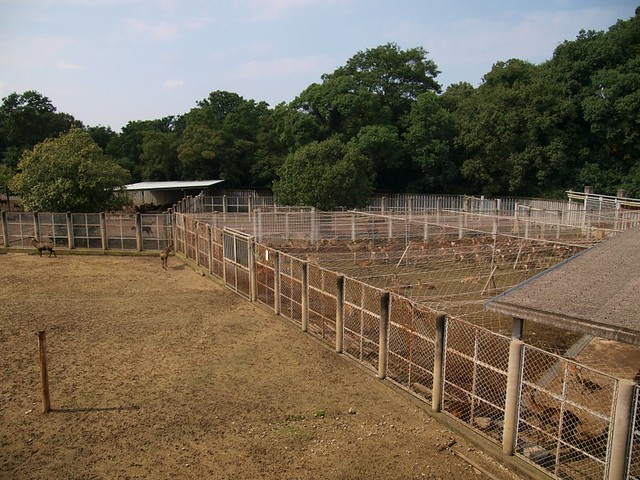
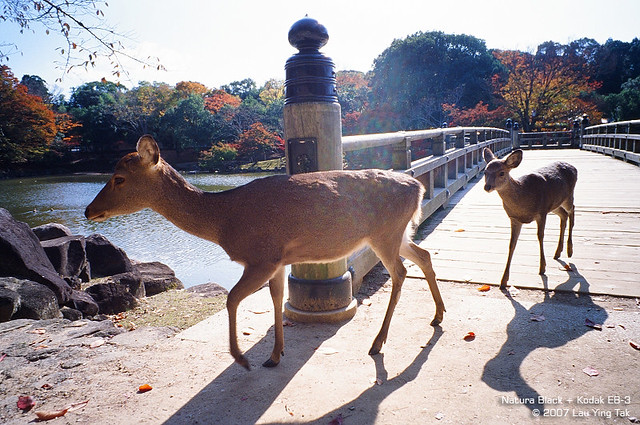
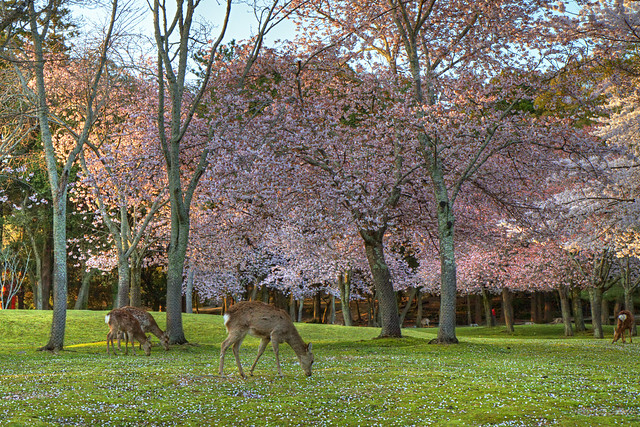
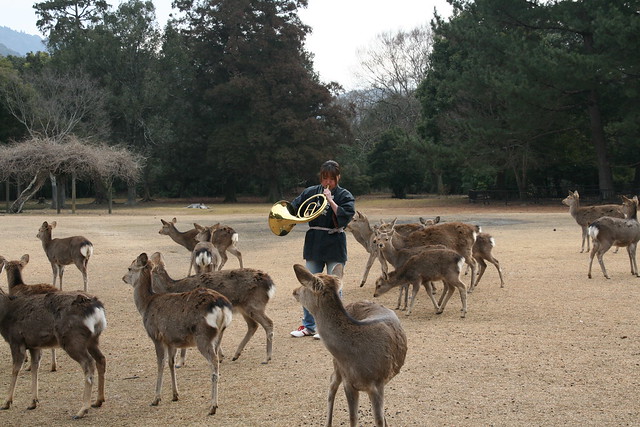
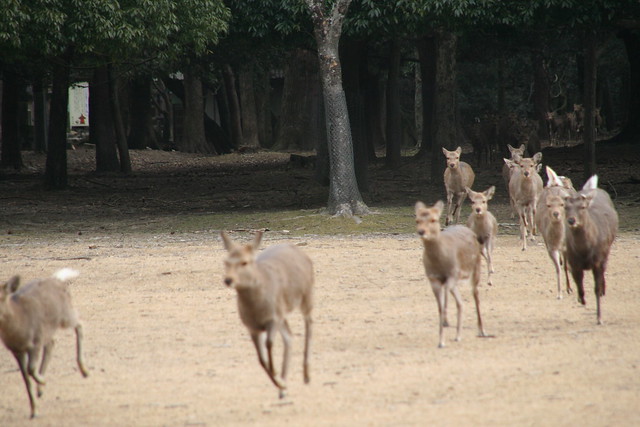











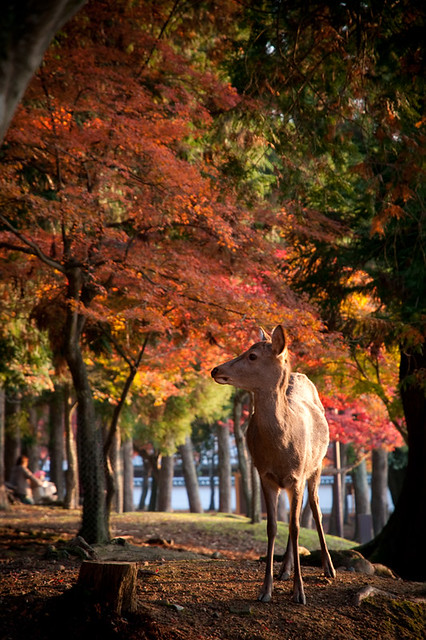
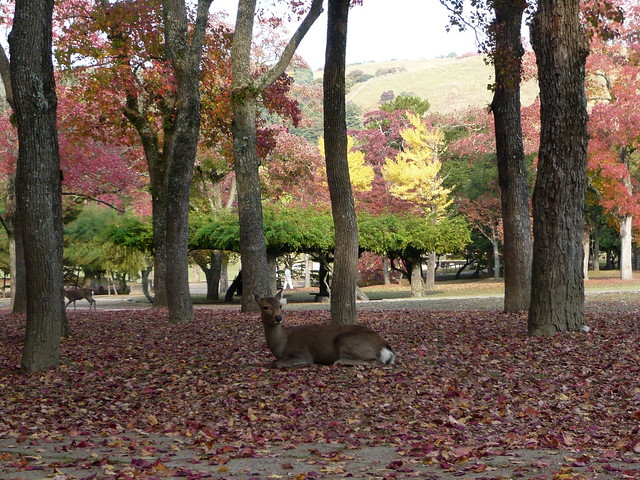
![正宮 - 伊勢神宮 内宮/伊勢旅行 [Ise Jingu]](http://farm3.static.flickr.com/2846/8914638544_2eabe77367_z.jpg?zz=1)
